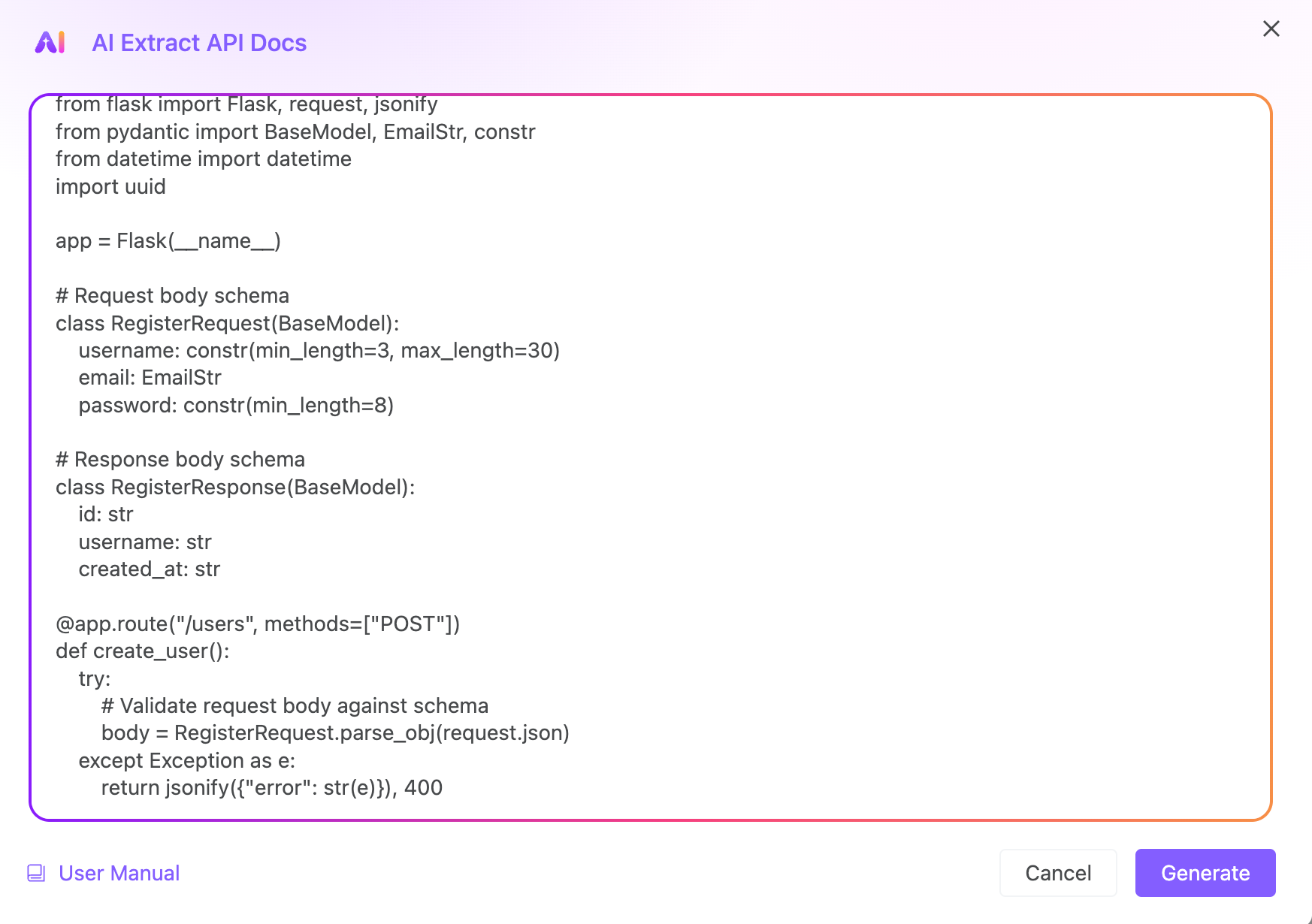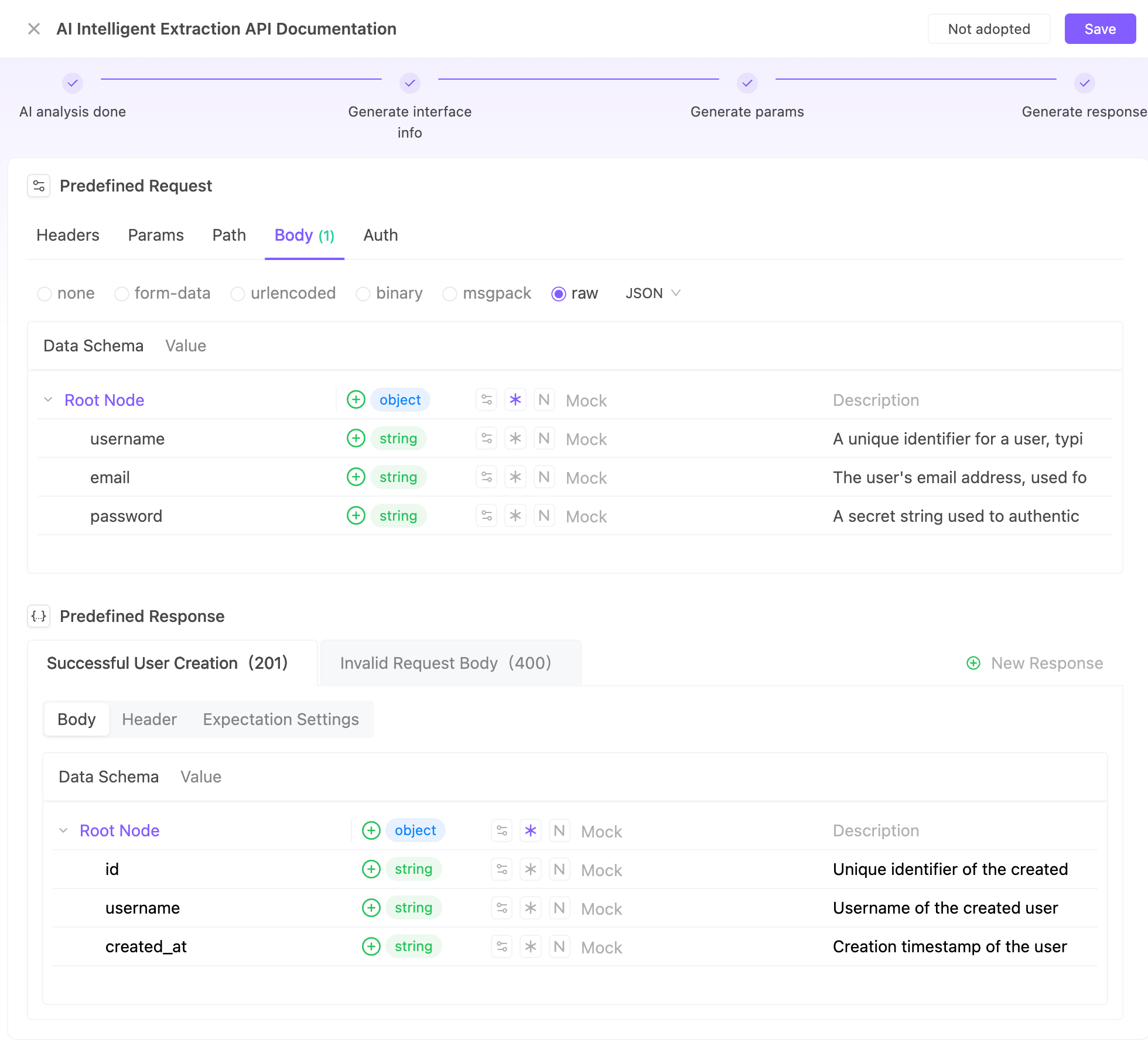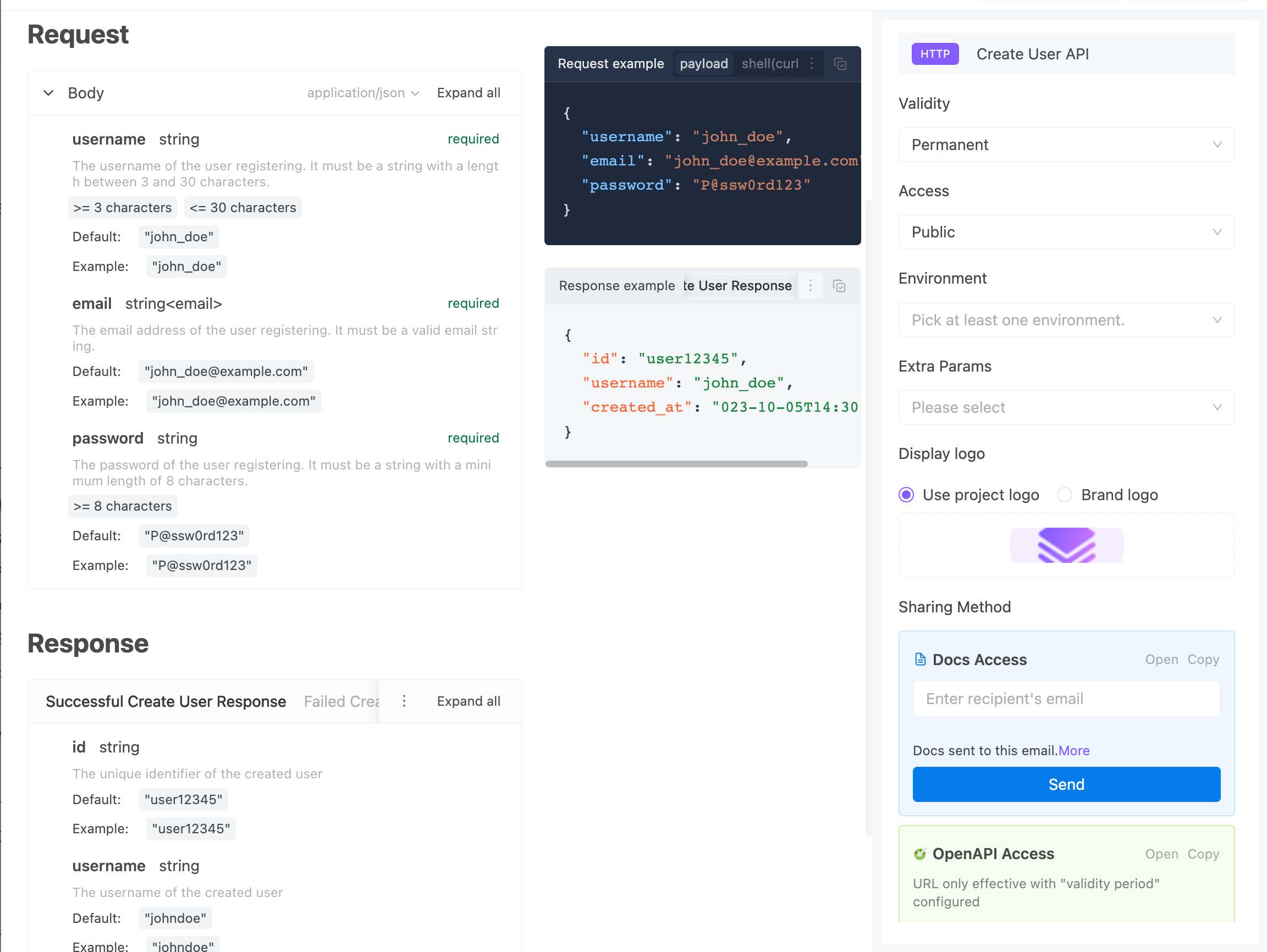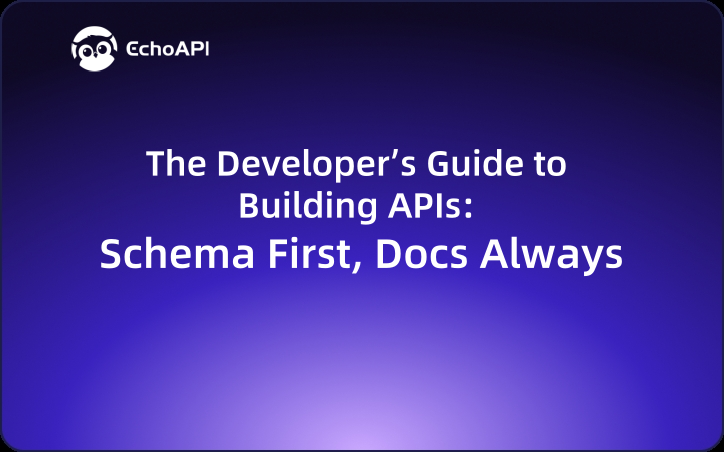The Developer’s Guide to Building APIs: Schema First, Docs Always
Schema is the contract, docs are the story—use both to ship APIs fast and fearless.
"API Schema? API Docs? Aren’t they the same thing? Like… twins?"
Nope. They’re more like siblings — one is a rule-following nerd who always wears a tie (Schema), and the other is a chatty storyteller who brings donuts to the stand-up meeting (Docs).
If you’re a developer (or just someone stuck reading one), understanding the difference between API Schema and Documentation can dramatically improve your workflow, save you from late-night debugging spirals, and reduce how often you yell “WHY is this field missing?!”
Step Into the Real World (Use Case)
Let’s say you’re building a very vanilla user registration feature. Backend provides a POST /users endpoint. Frontend needs to send over:
- Username
- Password
…and expects something like this in return:
- User ID
- Username
- Timestamp of creation
So far, so good. You, backend wizard, need to design the API. Your frontend buddy needs to call it. You’re both reasonably caffeinated. What could go wrong?
Well… a lot, actually. Unless you use both Schema and Documentation properly.
What’s the Actual Difference?
Here’s how I stopped worrying and learned to love the Schema:
| Comparison | API Schema (Strict Contract) | API Documentation (Friendly Guide) |
|---|---|---|
| Essence | Machine-readable, strict, type-safe | Human-readable, descriptive, and often more verbose |
| Format | JSON, YAML (OpenAPI, gRPC, JSON Schema) | Markdown, Swagger UI, Redoc, Postman |
| Written By | Usually backend; sometimes negotiated with frontend | Backend + tools + docs team (or just “Dave from QA”) |
| Who Reads It | Code generators, linters, mock servers | Frontend, QA, PMs, interns, and occasionally the dog |
| Main Purpose | Validation, mock services, type generation | To explain business context, fields, response behavior |
| Can Convert to Docs? | ✅ Yes, Schema → Docs (tools like Swagger, Redoc) | ❌ Nope, docs won’t generate schemas back |
Schema is for machines. Docs are for humans.
But spoiler: devs are also kinda machines, so we need both.
Different Folks, Different Needs
Here’s a peek at how different team roles interact with API Schema vs Docs — and why it matters:
| Role | What They Actually Use | Why It Matters |
|---|---|---|
| Frontend Dev | ✅ Reads docs ⚙️ Generates TS types from schema |
Needs to know: what’s required, what’s returned, and when |
| Backend Dev | ⚙️ Writes schema ✅ Uses docs for preview |
Ensures consistency and helps frontend not hate them |
| QA | ✅ Reads docs ⚙️ Schema for automated tests |
Builds accurate test cases and mocks quickly |
| Tech Writer | ✅ Generates docs from schema + adds human bits | Builds the external API portal (aka developer candyland) |
| Product Manager | ✅ Docs only | Wants to know: “Where’s the email_verified field?” |
My Dev Workflow: Schema + Docs in Harmony
Let’s get our hands dirty with some code. First, define your schema like a boss.
Step 1: Define the Schema (API Prenup)
# pip install flask pydantic flask-pydantic
from flask import Flask, request, jsonify
from pydantic import BaseModel, EmailStr, constr
from datetime import datetime
import uuid
app = Flask(__name__)
# Request body schema
class RegisterRequest(BaseModel):
username: constr(min_length=3, max_length=30)
email: EmailStr
password: constr(min_length=8)
# Response body schema
class RegisterResponse(BaseModel):
id: str
username: str
created_at: str
@app.route("/users", methods=["POST"])
def create_user():
try:
# Validate request body against schema
body = RegisterRequest.parse_obj(request.json)
except Exception as e:
return jsonify({"error": str(e)}), 400
# Generate user ID and creation timestamp
user_id = str(uuid.uuid4())
created_at = datetime.utcnow().isoformat()
# Create response object and return
resp = RegisterResponse(id=user_id, username=body.username, created_at=created_at)
return jsonify(resp.dict()), 201
if __name__ == "__main__":
app.run(debug=True)
Boom. That’s our formal, type-safe, validation-happy schema.
Step 2: Auto-Generate Docs (Because Ain’t Nobody Got Time to Write Markdown)
Use a tool like EchoAPI, Swagger UI, or Redoc. These tools ingest your schema and spit out beautiful, interactive docs. No more writing “This field is required” 500 times.


What Frontend Devs Actually See
This is where the magic happens.

Armed with this, the frontend dev can:
- Mock responses
- Write test calls
- Ignore you until integration testing begins
That’s a win-win.
All in EchoAPI.
Without Schema? Welcome to Chaos.
| Situation | No Schema? | With Schema? |
|---|---|---|
| Pre-integration testing | Manual docs, fragile coordination | Instant mocking with accurate types |
| Changing a field name/type | Ping everyone on Slack | Schema diff shows changes immediately |
| QA test automation | Lots of guesswork | Schema-based tests & mock services |
| Version control of APIs | “Hope no one notices we removed that field” | Versioned schemas, clear change logs |
| SDK generation for clients | Manually updated, constantly out of sync | One-click SDK from schema |
Seriously — working without Schema is like writing JavaScript without linting. Sure, it works. Until it doesn’t.
Lessons from the Field
After burning through a few dozen projects and more coffee than I’d care to admit, here’s what I’ve learned:
The API Schema is your source of truth. The docs are your translator.
One speaks machine, the other speaks human. Use both, or suffer the bugs.
You want these tools to work together:
- ✅ Schema: Enforces structure and type safety
- ✅ Docs: Clarify business logic and provide examples
- ✅ Schema → Docs: Automated, maintainable, and always in sync
- ✅ Docs → Humans: Usable, searchable, understandable
✅ Best Practices for Developers
| Scenario | Best Practice |
|---|---|
| Creating a new API | Define the schema first, then build the implementation |
| Collaborating in a team | Share the schema early — so everyone can mock, test, and build |
| Writing documentation | Auto-generate it with EchoAPI |
| Creating frontend types | Use EchoAPI to define and sync types from your schema |
| Mocking API responses | Let EchoAPI generate realistic mock data from your schema |
📝 Pro tip: Avoid hand-written Markdown — unless you love maintaining outdated docs. (No judgment. But… why?)
Final Thoughts (Put on a Poster)
Tired of messy handoffs, inconsistent docs, and surprise bugs?
EchoAPI turns your API schema into a living contract — and beautiful docs. Automatically.
With EchoAPI, collaboration gets faster, specs stay in sync, and devs stay happy.
No more manual OpenAPI writing. No more outdated docs.
Just build once, document always — and yes, you'll look awesome in code reviews.




 EchoAPI for VS Code
EchoAPI for VS Code

 EchoAPI for IntelliJ IDEA
EchoAPI for IntelliJ IDEA

 EchoAPl-Interceptor
EchoAPl-Interceptor

 EchoAPl CLI
EchoAPl CLI
 EchoAPI Client
EchoAPI Client API Design
API Design
 API Debug
API Debug
 API Documentation
API Documentation
 Mock Server
Mock Server








